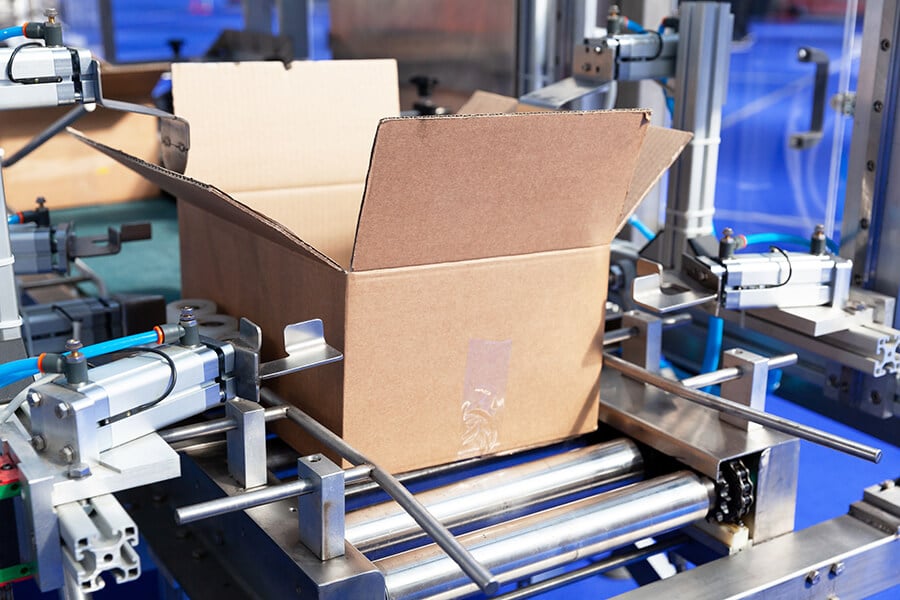Sortation Technologies

There are several technologies used to automate the distribution of the items in an order delivery system. A sorter can sort items to packing stations. Sorters can also separate finished orders so they arrive at specific destinations or shipping dock doors. A variety of factors are used in selecting a type of sortation technology including item type, item size, and throughput requirements.
Maintained Orientation / Line Sortation: A line sorter is a single line of conveyors. Items that are not diverted off from this conveyor go to a downstream conveyor to be recirculated. Maintained orientation sorters keep items in the same orientation. If an item enters this type of sorter with its short dimension in the direction of travel, it will leave the sorter with the same orientation. Some specific types of these sorters include deflectors, wheel divert roller sorters, and sliding shoe sorters.
Right Angle (90 degrees) Line Sortation: Right angle sorters will rotate an item’s orientation 90 degrees. For example, if a box is traveling with its widest side facing forward on one of these systems, the system will turn the box so its narrow side will be facing forward. Some examples of these include:
- Pushers - are padded paddles that push items off a belt conveyor perpendicular to the direction of travel.
- Right angle transfers - involves the lifting and diverting of products by belts between rollers in a motorized driven roller system.
- Dual activated roller belts - convey items on rollers embedded in a plastic belt that allows for a 90-degree change in orientation.
Loop Sortation: A loop sorter is a continuously rotating machine and items can be placed on the sorter at multiple introduction points. The ability to introduce items manually or automatically at several locations gives this type of sorter a higher (throughput) capacity. Some examples of these include:
- Tilt-Tray sorter - utilizes trays mounted to carts on the continuous loop conveyor. The trays tilt and transfer items down into a chute when an item reaches its destination point.
- Cross-belt sorters - use articulating belts on the carts instead of tilting trays.